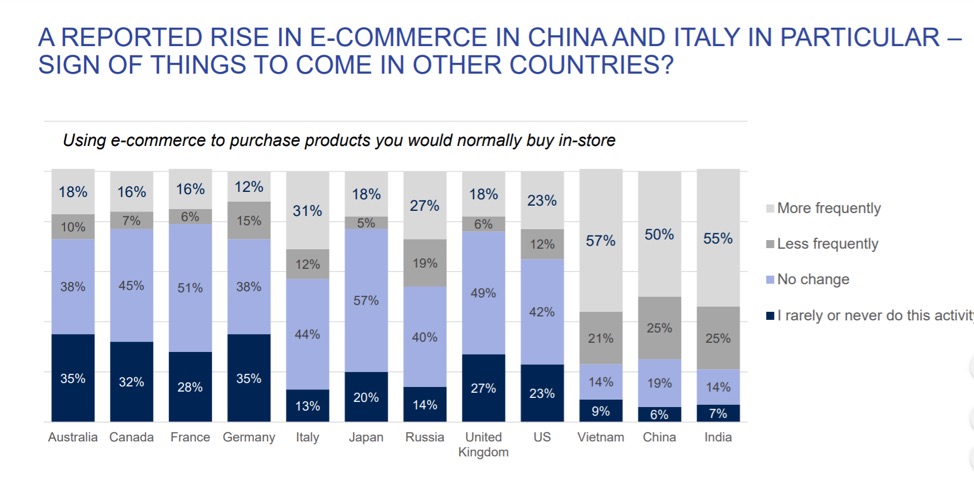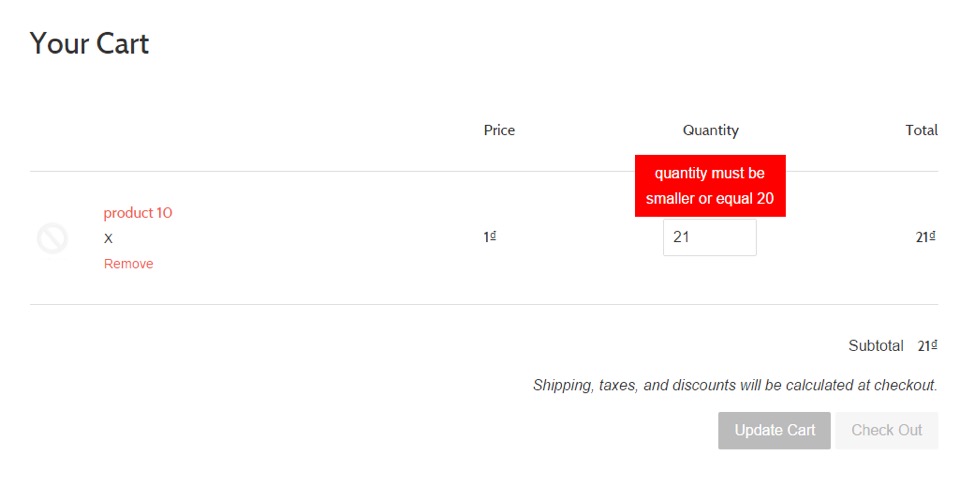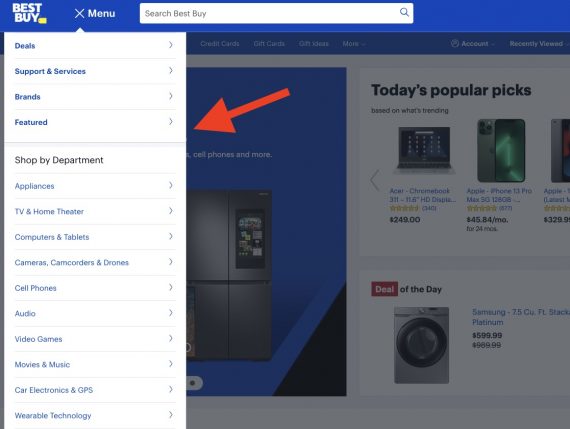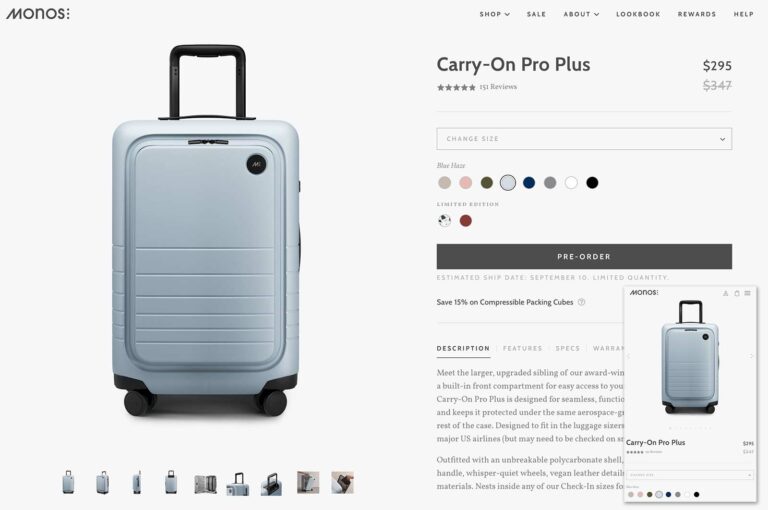Is your ecommerce business rising up to these challenging times? Let us know what changes you’ve made to make your customers a priority.
This global pandemic is also fueling a rapid adoption of online shopping among older consumers who are more vulnerable to the virus. In China, Alibaba says the number of orders placed by people born in the 1960s has quadrupled this year when compared to last year. In the US, 9 out of 10 consumers aged 45+ say they will avoid both shopping malls and physical stores if the outbreak worsens. Older people will increasingly use online stores as the coronavirus infection rates grow.

Ecommerce platforms can partner with local shops and provide them a platform where they can sell directly to consumers who now prefer to shop online. This can help ecommerce stores maintain a steady supply that meets the increased demand. Ecommerce stores can handle hoarding through limiting the number of products a consumer can order. A customer-focused approach is key to solving the crises that increased demand brings. With consumers abandoning brick and mortar stores during this viral epidemic, online stores can put their customers first, increase profit, and help local businesses impacted by this viral outbreak.
Challenges Ecommerce Stores Will Face with Increased Demand
One challenge ecommerce stores will face is demand outstripping supply. Since every age group is shopping online to avoid contact with potential infection, orders may outpace stock. Amazon’s Whole Foods is being overwhelmed by grocery delivery orders with customers seeing a banner that says “Inventory and delivery availability may be temporarily limited due to increased demand. Confirm availability at checkout.” This perceived scarcity will lead to consumers buying more than they need and hoarding goods because they believe they may not find products when they need them. This behavior will increase the stock shortages online stores are already experiencing.
Countries like the US, Vietnam and India have seen a 23%, 57% and 55% increase in online shopping for the same period. Instacart, an American online grocery store, says sales grew tenfold in the first week of March compared to the previous week. Another American online grocer, Farmstead, reported a 30% increase in delivery orders the first week of March compared to previous weeks.
Ecommerce stores should leverage and strengthen relationships with suppliers and logistics providers. So that they can both get the products into warehouses, and get the products into the hands of customers.
And partnering with local stores can help them generate revenue so they can stay in business despite the pandemic. Alibaba’s Cainiao network links offline local stores to online buyers. As consumers stay indoors and order online, these local stores become mini-distribution centers for goods they sell, which helps reduce delivery times. Amid a lockdown in cities like Wuhan, Alibaba could still ship food and medical supplies within the affected cities, thanks to an extensive network of local retailers on their platform.
In addition, it makes sense to make sure that the supply chain all the way to the manufacturer has contingencies to ensure that supply is assured even if this pandemic is to last a long time.
Another great way ecommerce stores are dealing with increased demand is hiring more workers to handle the increased demand for products, fast delivery and customer support. Amazon plans to add 100k workers to its workforce to deal with increased online orders. Walmart and Kroger also plan to increase their workforce by 150k and 10k respectively to handle increasing demands as consumers stay home and shop online. Even as restaurants lay off workers, Pizza chain Domino’s is adding 10k workers to its labor force amidst the pandemic.
With more orders, logistics may become overwhelmed and this can cause delays. These will lead to customers inundating the store’s customer support agents with calls and inquiries about their orders.
Providing impeccable service during this pandemic will not only increase trust in ecommerce stores, it will revolutionize how people shop even when the pandemic ends.
How Ecommerce Stores Can Deal with Increased Demand
One sector experiencing a surge amidst the downturn is Ecommerce. Ipsos MORI reports that 50% of Chinese shoppers and 31% of Italian consumers use ecommerce platforms more frequently to purchase items they usually buy in-store since the coronavirus outbreak. Chinese ecommerce giants, JD Doajia and Alibaba, have reported a 470% and 220% increase respectively in sales this year compared to last year since the pandemic began.
Because of this increased demand, the logistics systems worldwide are under a lot of strain. This is made worse by lockdowns all throughout the world, which means that both on the supply chain and the customer delivery end, it is a challenge to both get products imported, and also get products into the hands of customers.

Increased demand means that for groceries and medical supplies, it is no longer a marketing problem. The problem becomes one of whether you can get supply (supply chain), and whether you can get those groceries and medical supplies to customers.
Given the reliance of entire countries on ecommerce to sustain its populace and economy during this viral pandemic, ecommerce stores will face many challenges to meet this increased demand.
On solving delivery and fulfillment challenges, Francis says:
The Covid-19 pandemic has ground normal life to a halt in many countries. Mass lockdowns, school closures, bans on non-essential services and large gatherings have forced people indoors and limited economic activities. Industries from manufacturing to travel are feeling the pinch as consumers hunker down at home to slow the spread of the novel coronavirus.
With this pandemic, more people will rely on ecommerce stores to access food, basic cleaning and medical supplies. Ecommerce businesses can meet this surge in demand by hiring more workers to handle fulfillment and customer service, partnering with local businesses to increase stock, and prevent hoarding.
Francis Teo of Blue Lambda, an ecommerce focused optimization agency, breaks it down:
Conclusion
While many companies source products from China, most do not source all their merchandise exclusively from there. Ecommerce stores can shift manufacturing from China to countries like Taiwan, Vietnam, Indonesia, etc. where the outbreak is mild and hasn’t affected factory outputs. This will help ecommerce stores weather the supply chain disruptions with adequate stock.
Another challenge for ecommerce stores with increased demand is fulfillment.
When ecommerce stores run out of stock, restocking may not be an option as the coronavirus pandemic has disrupted supply chains worldwide. Online stores that source stock from China and other Asian countries may not restock since factories in affected regions are closed to curtail the spread of Covid-19. US retailer Best Buy sources 60% of its products from China and may face problems restocking products in time for seasonal holidays like back to school in September.






![[Infographic] Grow and Protect your Position in the Data Ecosystem](https://research-institute.org/wp-content/uploads/2022/11/infographic-grow-and-protect-your-position-in-the-data-ecosystem-scaled.jpg)
![What Is Schema Markup [and Why Is It Important For SEO]](https://research-institute.org/wp-content/uploads/2021/04/what-to-know-before-you-sell-your-small-business-768x432.png)
